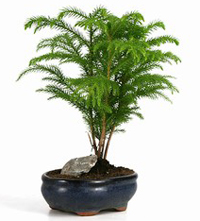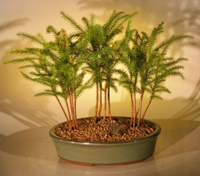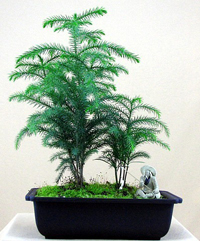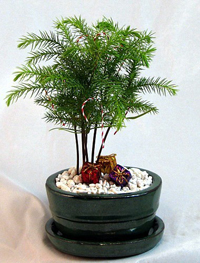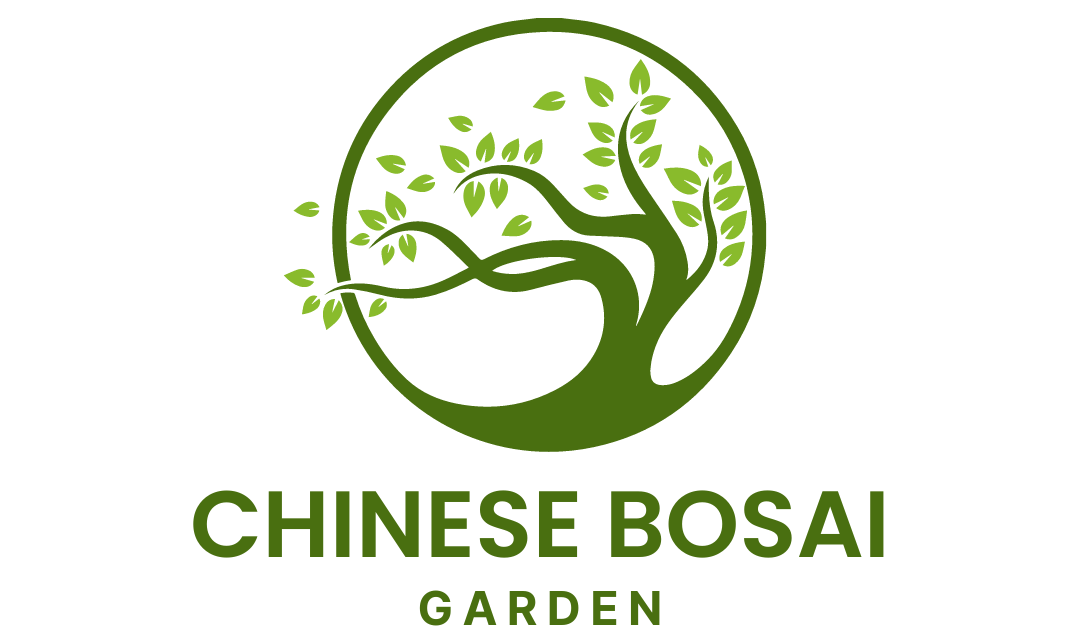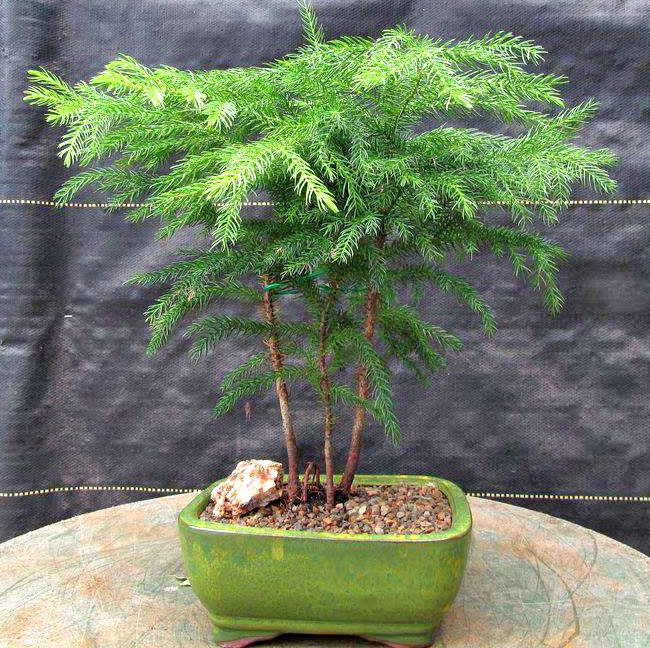
The Norfolk Island Pine Bonsai Tree, scientific name Araucaria heterophylla, is native to Norfolk Island in the southern Pacific Ocean, east of Australia. This evergreen is often used as a small table Christmas tree during holidays.
There is some confusion between Araucaria heterophylla and Araucaria columnaris which looks like A. heterophylla when young but changes its appearance as it gets older.
Pine trees are one of the less difficult species to grow in a bonsai form.
Additional Information
Family: Araucariaceae
Scientific name: Araucaria heterophylla
Common Names: Norfolk Island Pine, Norfolk Pine, House Pine.
Origin: Native to Norfolk Island in the southern Pacific Ocean, east of Australia.
Appearance: Has a straight vertical gray-brown trunk with symmetrical branches. On younger trees leaves are narrowly wedge-shaped. Mature trees have scale-like overlapping leaves. In the wild, this evergreen can get up to 200 feet tall.
Flowering: In the wild, it produces cones with nut-like edible seeds inside. Female cones are produced when the tree is around 15 years old, male cones are produced after the tree is 40 years or older.
Outdoor/Indoor Use: Both.
Light Requirements: If prefers full sun but can also adapt to partial shade.
Water Requirements: Likes well-drained soil. Allow for the soil to dry between watering. It doesn’t like moist soil. Water more during summer months and less during winter. Avoid overwatering. Never allow the soil to dry out completely.
Pruning/Training: You can wire it at any time of the year. Avoid keeping wires for longer than four months. This is not an easy tree to prune, since you can’t just cut the tip of the leaf.
During spring months, prune new buds while they are still light green. If you prune it the wrong way, it might stop growing. You should practice on several inexpensive trees before giving it a try.
Bonsai Style: You can use any classical bonsai style. Works great in formal upright, informal upright, tree forest, and cascade styles.
Fertilizing: Feed with well-balanced liquid fertilizer during spring and fall months.
Repotting: Should be repotted once every two years, using fast-draining soil. Regular bonsai soil mix works well.
Hardiness: Does best in the USDA Zone 10-11. Needs to be protected from freezing temperatures.
Insects and Diseases: Usually very healthy. Scales, sooty mold, leaf spots.
Propagation: By seed or cuttings.
Buy Norfolk Island Pine Bonsai »
